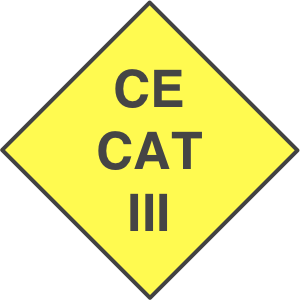The Portwest A810 is a chemical resistant gauntlet with textured pattern for enhanced grip
Flock lined for added comfort. For use in the chemical, oil and food industries.
Length 320mm, Thickness 0.38mm





EN 420, EN 388, EN 374-1, ANSI/ISEA 105-2011
More Portwest Gloves
Product Technical Information
Standards
- AS/NZS 2161 .2
- AS/NZS 2161 .3
- AS/NZS 2161 .10.1
- EN ISO 374-5 Micro Organisms Pass
- EN 388:2016 - 3.1.0.1.X
- EN ISO 374-1:2016 Type B J.K.L
- EN 420
Documentation
Protective Gloves : General Requirements
EN420 : 2003 + A1 2009
This standard defines the general requirements for glove design and construction, innocuousness, cleaning instructions, electrostatic properties, sizing, dexterity, water vapour transmission and absorption along with marking and information
Protective Gloves Against Mechanical Risks
EN388:2003
This standard applies to all kinds of protective gloves in respect of physical and mechanical aggressions caused by abrasion, blade cut, tearing and puncture. This standard is only applicable in conjunction with EN420 (1 being the minimum performance rating).
Requirements
Performance levels 1-4
D) puncture resistance
Force required to pierce the sample with a standardised punch.
Performance levels 1-4
C) tear resistance
Maximum force required to tear the sample.
Performance levels 1-5
B) Blade cut resistance
Number of cycles required to damage the sample at constant speed
Performance levels 1-4
A) Abrasion resistance
Number of cycles required to damage the sample at constant speed


CHEMICAL TYPES



Protective Gloves: Against Chemicals and Mirco-Organisms
EN374-1:2003
This European standard specifies the requirements for gloves to protect the user against chemicals and/or mirco-organisms and defines terms to used.
EN 374-2:2003
This European standard specifies a test method for the penetration resistance of gloves that protect against chemicals and/or mirco-organisms
EN 374-3:2003
This European Standard specifies the determination of the resistance of protective glove materials to permeation by potentially hazardous non-gaseous chemicals under the condition of continuous contact.

EN374 – biohazard
Gloves must prove that they are a effective barrier abundant liquids and mirco-organisms
Performance levels are according to Acceptable Quality Levels (AQL) whereby samples are taken from a batch of gloves and tested during production for pinholes and leaks by either inflation with air or by filling with water.
Gloves must meet st least level 2, to be considered micro-organism resistant.
(Level 1 = AQL 4.0) (Level 2 = AQL 1.5) (Level 3 = AQL 0.65)